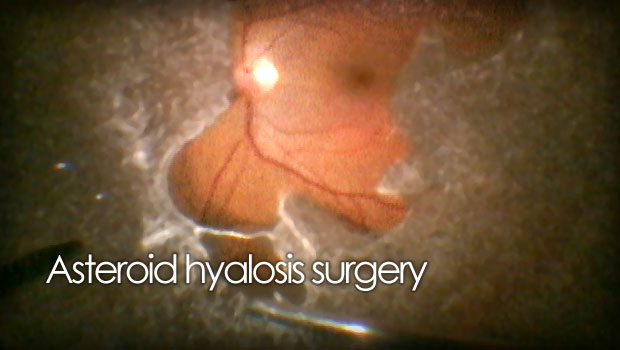Vitreous floaters removed with vitrectomy surgery


Vitreous floaters removed with vitrectomy surgery
Asteroid hyalosis removed with vitrectomy surgery
Asteroid hyalosis is an eye condition involving the vitreous humor – the clear, jelly-like substance that fills the inside of the eyeball, between the lens near the front of the eye and the retina, the back, inner wall of the eyeball.
Asteroid hyalosis is characterized by a very large number of calcified white “specks” (opacities) suspended in the vitreous. The condition is usually seen in people over sixty years of age and it occurs in more men than in women.
Asteroid hyalosis is similar to the eye condition commonly known as “Floaters”. Floaters usually occur when the aging vitreous thickens and clumps together, forming dense strands of fibrous cell debris floating unrestricted around the vitreous. Asteroid hyalosis is different from floaters in that it is a degenerative condition involving calcium deposits that usually suspend in one place in the vitreous. They will “waft” back and forth subtly with eye movement, but return to their original position. As seen in this video.
Asteroid hyalosis is not dangerous and rarely leads to vision loss. In fact, the floating white specks are typically more visible to the eye doctor during an exam than to the patient during his or her normal daily activities.
In rare cases, the debris can become very annoying and even visually debilitating to the patient. In these cases, a surgical procedure, called pars plana vitrectomy, can be performed by an ophthalmologist vitreo-retinal surgeon.
Pars plana vitrectomy involves using a small instrument with a tiny cutter that dissects the vitreous gel and sucks it out through a needle-like tube. The white, calcific specks from the asteroid hyalosis are sucked out of the eye with the vitreous. After the vitreous is removed, it is replaced by a special, sterile saline solution whose consistency closely resembles the natural vitreous fluid removed from the eye. Vitrectomy is a very safe procedure and is considered the foundation of most retina surgeries.







